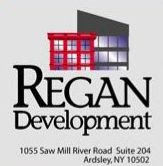Green Design Makes 'Cents'
Multi-Housing News
Sept 4, 2008 By Keat Foong, Executive Editor
Green developments do not necessarily have to cost that much more. In the development of green multi-housing, certain measures are relatively cost-efficient but still go a long way toward achieving environmental sustainability. The items and measures "can literally range from zero to hundreds of thousands of dollars," says Michael Massie, housing development manager with the affordable housing developer Jamboree Housing Corp. For example, many of the items on Jamboree's green development checklist "simply required resourcefulness and creativity, not excessive expense," says the company. Low-VOC paints and dual-flush toilets are examples of green products that cost very little extra to incorporate, says Massie. "The difference in price for VOC versus non-VOC paints is pretty incidental," he adds. "And low-flush toilets have a dramatic impact, but cost just a few hundred dollars more." One measure that costs nothing extra but takes a big step in the direction of green building is orienting the building correctly in relation to the sun's exposure. In order to incorporate such measures and get the best bids from contractors, developers are advised to start planning their green strategies early, at the start of the design process. "The design process, if done correctly from the beginning, helps to find the strategic orientation of the building and take advantage of prevailing winds. These steps do not add to the cost of the building, but have a positive effect on the environmental aspects of the project," says Christof Jantzen, principal partner at the Los Angeles-based Behnisch Architects. Just how much more do green buildings cost today? The answer depends on many factors. Nevertheless, developers have general rules of thumb. "You are hovering about the 10 percent level," in higher construction costs, advises Angelo Del Russo, founder and CEO of Del-Sano Construction Corp., based in Union, N.J. Most of the extra costs in green projects come from the products and materials side, rather than from labor, Russo says. AvalonBay Communities Inc. currently has about a dozen green projects in the pilot phase, says Phillip Wharton, vice president of development in the company's New York office. One environmentally sensitive project the company is developing is the 507-unit Avalon White Plains, in White Plains, N.Y. The project is the first residential property in the city to incorporate green features under a New York State Energy Research and Development Authority (NYSERDA) program. The company will be reimbursed for as much as $504,747 under the program for the additional costs of incorporating or exceeding NYSERDA's energy conservation requirements. The measures taken by AvalonBay include the use of high-efficiency condensing boilers, low-rate ventilation fans, high-efficiency elevators and lighting, and Energy Star appliances. Wharton estimates the additional costs of implementing green building measures to be 2 to 5 percent of the total development cost, "which is significant because our developments often cost $100 million." All these items, Wharton says, would not have been economically worthwhile to incorporate without the NYSERDA incentives. "Over time, as the technology becomes more prolific, we'll start to see payback. The goal now is to be cost neutral or have the cost offset by the lower expenses," says Rachel Loeb, AvalonBay senior development director. California-based affordable housing developer Jamboree Housing Corp. agrees that green building can generate about 10 percent in additional costs. A project that the company currently has on the drawing boards is aiming for LEED Gold certification. The green certification will add about another $2 million to the $20 million development, estimates Massie. Jamboree now incorporates a green checklist at the start of design engineering for each of its projects. The developer says it typically exceeds California's Title 24 requirements by 15 percent and takes further steps to lower energy consumption and lower the level of pollutants. Its extensive standard green development checklist includes items such as avoiding wetlands or steep slopes, limiting density to 26.5 units per acre, using Energy Star appliances, designing units for east-west orientation for access to the sun, using through-unit design for maximum daylight penetration and natural ventilation and using capped ducts during construction. Many sustainable measures incur fixed costs no matter the number of units. In this regard, building green can actually result in fewer additional costs as a percentage of total costs if the development is high-cost or has many units. International developer Hines is currently developing the 35-unit One Jackson Square in the Greenwich Village neighborhood of New York. David Penick, vice president at Hines and the developer of the project, estimates that the LEED Silver rating will add about "3 percent in extra costs in the context of a very high-quality building." Condominiums at the project will sell for about $2,500 per square foot, or about $2.1 million to $22 million. "The additional cost is not that great if the project is a high-quality building," says Penick. Environmentally friendly measures to be employed at One Jackson Square include the use of at least 10 percent post-consumer recycled materials; 20 percent regional sourcing of materials; low-VOC paints, finishes and adhesives; mechanical systems such as high-efficiency motors and local control of equipment; and a green roof to reduce water runoff and heat emission. According to Penick, the green roof is one of the most expensive propositions in the green equation. He says the union-installed cost for the green roof system at One Jackson Square will be about $25 per sq. ft. In any case, the biggest financial challenge of building green to LEED standards is "meeting the energy requirements without question," says Penick. "It is also one of the biggest benefits because greater energy efficiencies will lower building costs," he says. Other costly green items are photovoltaic cell solar panels used for the generation of energy from the sun. Jamboree Housing employed these panels in its 36-unit Laurel Crest Apartment Homes in Lancaster, Calif. at a cost of $169,000. However, the company is obtaining a $69,000 rebate from the state of California, and the use of the technology helped the developer earn an additional $35,000 in equity from the sale of 4 percent tax credits. The anticipated savings are at least $6,500 a year in electricity charges. As a result, the company was able to take out an additional $91,000 in extra debt.
www.del-sano.com
Thursday, February 26, 2009
Green Design Makes 'Cents' CEO Angelo Del-Russo Quoted
Labels:
Green Building,
Multi-Housing News,
Quoted
Subscribe to:
Post Comments (Atom)






No comments:
Post a Comment